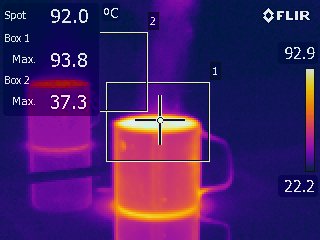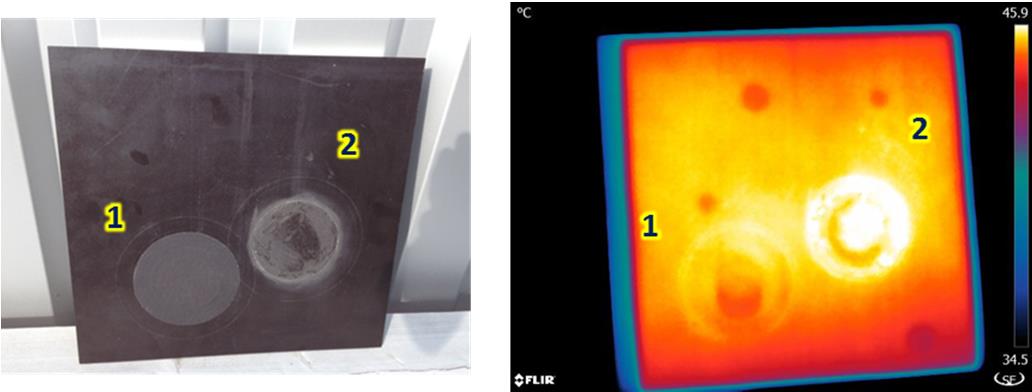Thermographic Testing
Thermographic Testing (IR) is a method in which the infrared radiation image is recorded to get an impression of the temperature of the object. This test method is strongly developed and is therefore used in an increasing number of situations, e.g. the following applications:

- Aviation water entrapment;
- Delamination of composites;
- Electrical systems;
Almost every object (for example: buildings, vehicles, installations, measurement/control boxes, etc.) emits infrared radiation that can be recorded with an infrared camera. From this registration, the temperature can be determined and made measurable. The accuracy of the measurement is an important factor, this is called the emission factor (‘e). The emission factor is defined as the ratio between the actual temperature and the temperature as measured by the infrared detector in the infrared camera.
Thermography has the advantage that the temperature can be measured through a contactless measurement and recording of the infrared radiation image. This is often used as an inspection tool in construction, electrotechnical installations and mechanical engineering installations. By using a camera it is possible to carry out an investigation of a large object in a relatively short period of time.

Thermographic testing has proven to be an testing research method to achieve cost savings for temperature-technical problems.

The inspectors are trained according to the SNT-TC-1A.
Testing can take place according to all applicable standards and regulations of the principals.

